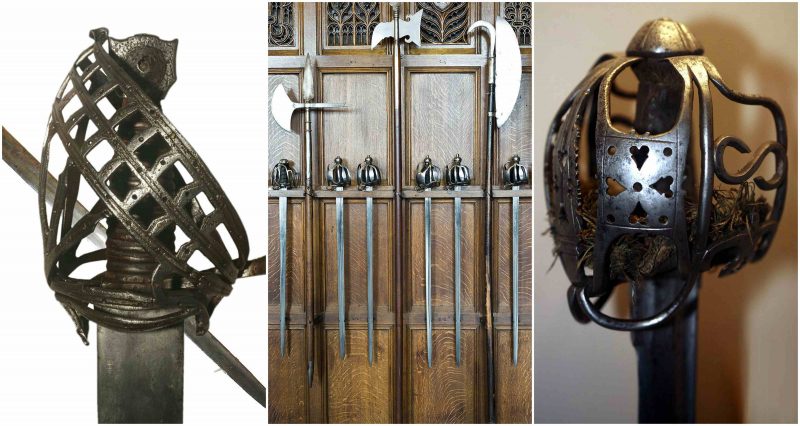The basket-hilted sword is the name of a group of sword types of the early modern era, characterized by a basket-shaped guard that protects the hand. The basket hilt is a development of the quillons added to swords’ crossguards since the Late Middle Ages. In modern times, this variety of sword is also sometimes referred to as the broadsword.
The basket-hilted sword was generally in use as a military sword, in contrast with the rapier, the slim dueling sword worn with civilian dress during the same period, although each did find some use in both military and civilian contexts.
A further distinction applied by arms historians and collectors is that a true broadsword possesses a double-edged blade, while similar wide-bladed swords with a single sharpened edge and a thickened back are called backswords. Various forms of basket-hilt were mounted on both broadsword and backsword blades.
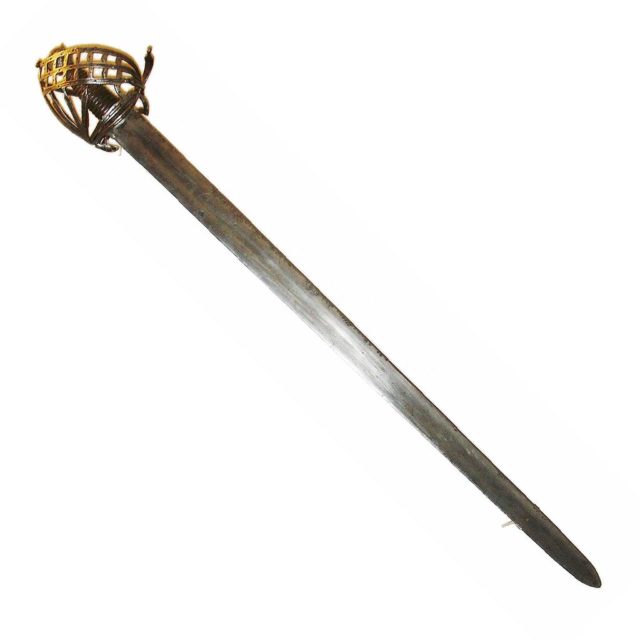
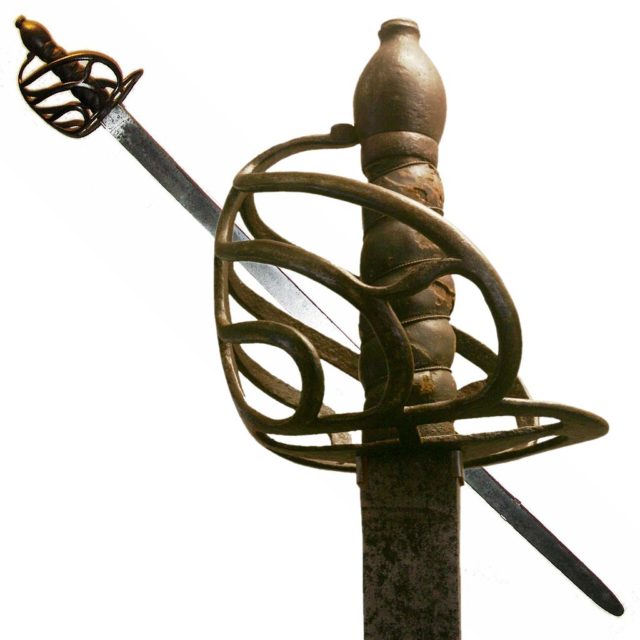
The basket-hilted sword was a development of the 16th century, rising to popularity in the 17th century and remaining in widespread use throughout the 18th century, used especially by heavy cavalry up to the Napoleonic era.
One of the earliest basket-hilted swords was recovered from the wreck of the Mary Rose, an English warship lost in 1545. Before this find, the earliest positive dating had been two swords from around the time of the English Civil War. At first, the hilt used a simple wire guard design, but as time passed it became increasingly sculpted and ornate.
The basket-hilted sword was a cut and thrust sword which found the most use in a military context, contrasting with the rapier, the similarly heavy, thrust-oriented sword most often worn with civilian dress which evolved from the espada ropera or spada da lato type during the same period.
The terms “broadsword” and “backsword” were not used in the 17th and 18th centuries and are of Victorian invention, referring to double-edged and single-edged basket-hilted swords respectively. Both terms were introduced to distinguish these cut and thrust swords from the narrower rapier and smallsword.
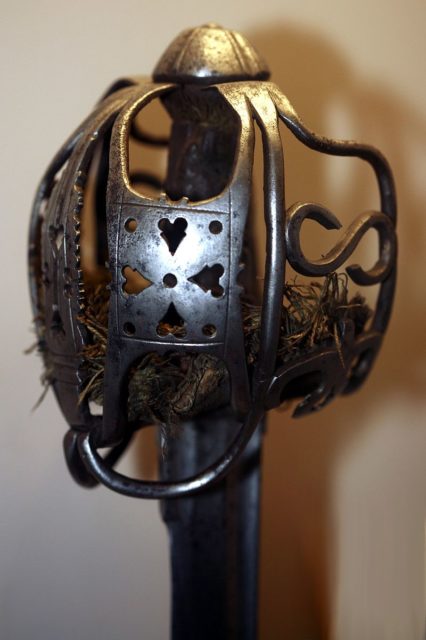
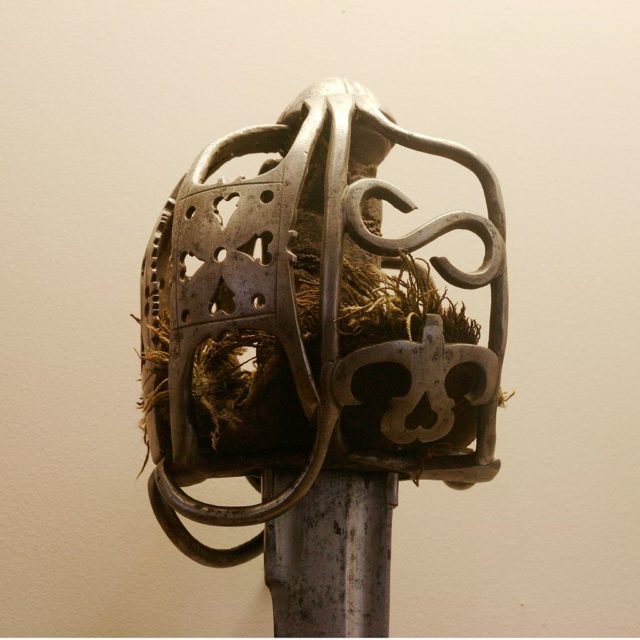
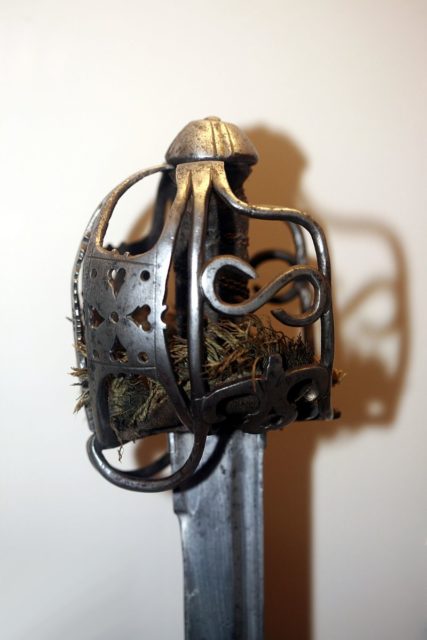
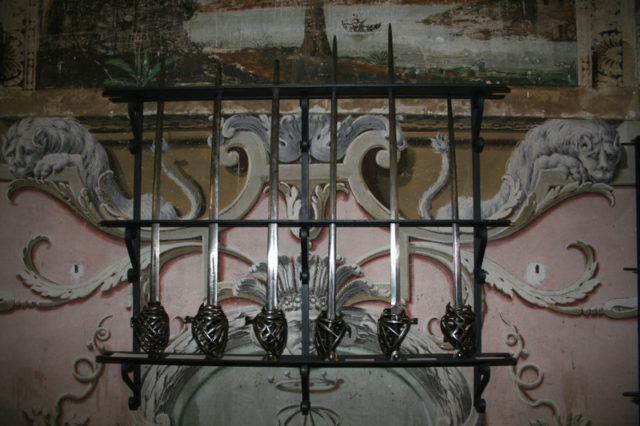
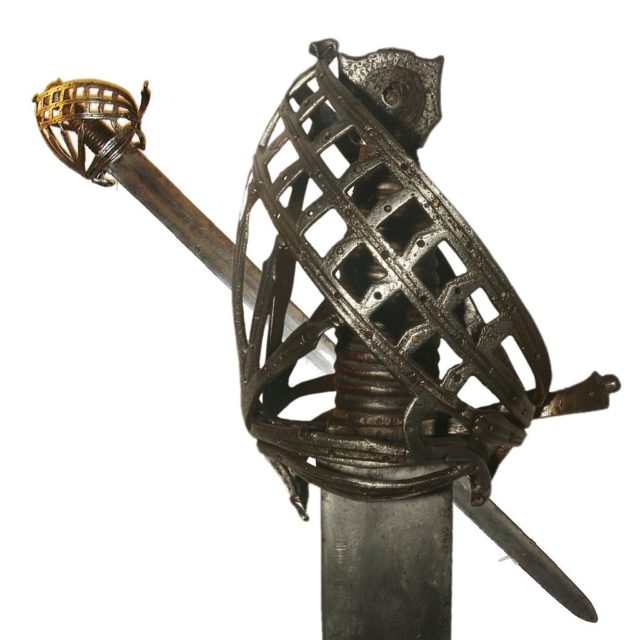
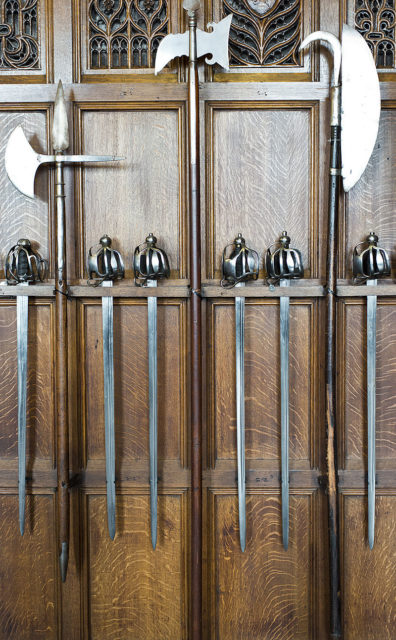
By the 17th century there were regional variations of basket-hilts: the Walloon hilt, the Sinclair hilt, schiavona, mortuary sword, Scottish broadsword, and some types of eastern European pallasches. The mortuary and claymore variants were commonly used in the British isles, whether domestically produced or acquired through trade with Italy and Germany. They also influenced the 18th-century cavalry sabre.
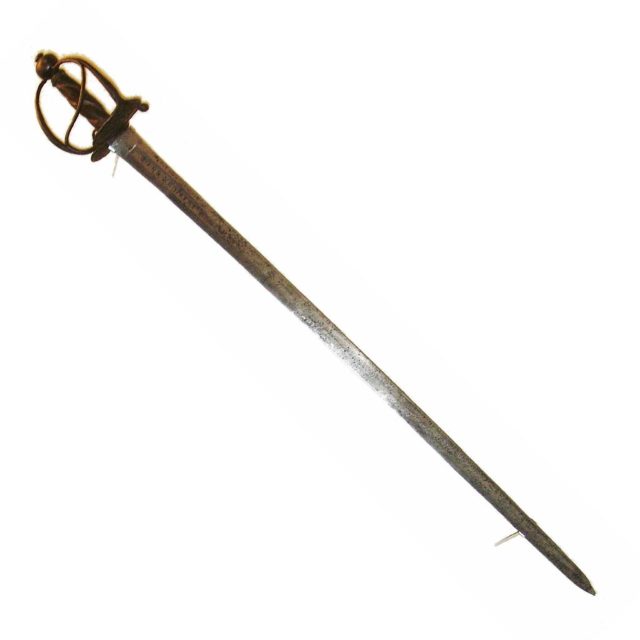
During the 18th century, the fashion of dueling in Europe focused on the lighter smallsword, and fencing with the broadsword came to be seen as a specialty in Scotland. A number of fencing manuals dealing with the Scottish broadsword were published throughout the 18th century.
Descendants of the basket-hilted sword, albeit in the form of backswords with reduced “half” or “three-quarter” baskets, remained in use in cavalry during the Napoleonic era and throughout the 19th century, specifically as the 1796 Heavy Cavalry Sword, the Gothic Hilted British Infantry Swords of the 1820s to 1890s, the 1897 Pattern British Infantry Officer’s Sword and as the Pattern 1908 and 1912 cavalry swords down to the eve of World War I.
